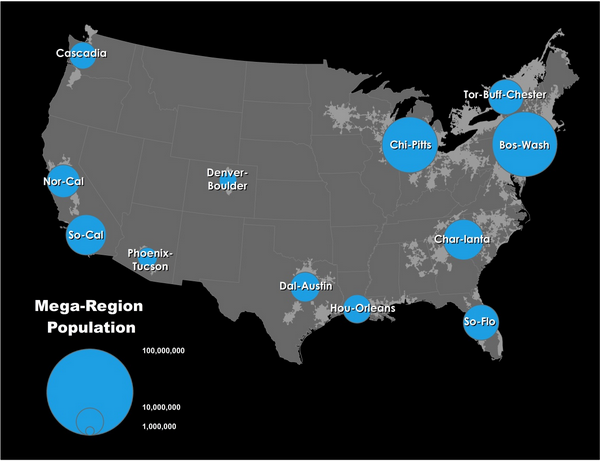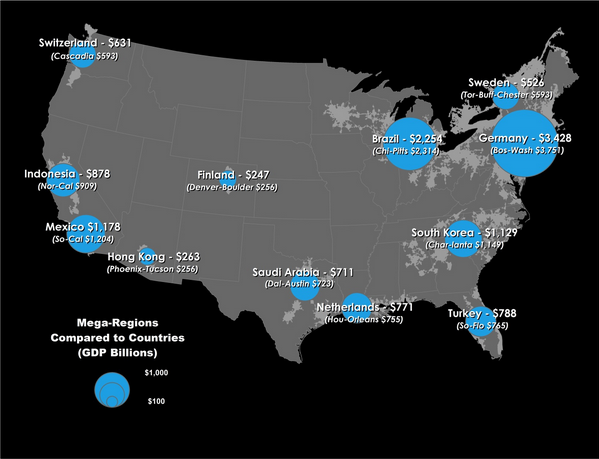'Mega-Regions' Produce 75 Percent Of US GDP

Mega-regions, areas that include more than one major city or metropolis, make up more than 60 percent of all U.S. metropolitan areas. They are where more than 70 percent of the U.S. population lives, and they produce about 75 percent of U.S. gross domestic product, according to economist Richard Florida in his recent study, conducted with the Martin Prosperity Institute.
Florida examined the populations and economies of U.S. metro areas, and he found these regions to be both population giants and economic powerhouses. He then mapped the mega-regions and compared their economies to countries around the world with similar economic outputs.

The three largest regions are “Bos-Wash,” “Chi-Pitts” and “So-Cal.” Other mega-regions of the dozen studied include “Hou-Orleans,” “Dal-Austin” and “Char-lanta.”

Bos-Wash is the 500-mile stretch covering the U.S. moneymakers of Boston, New York, Philadelphia, Baltimore and Washington, D.C. It’s home to 18 percent of the U.S. population (56.5 million people) and generates $3.75 trillion. So if Bos-Wash were its own country, its economy would be the fourth largest in the world, behind the U.S., China and Japan and ahead of Germany.
Chi-Pitts stretches from Pittsburgh through Cleveland, Detroit, Indianapolis, Chicago and Minneapolis, covering 50 metropolitan areas in total. Nearly 42 million people live in the mega-region and generate $2.3 trillion, about the size of Brazil’s economy, larger than Russia’s and smaller than the U.K.’s.
So-Cal covers Los Angeles to San Diego and includes Tijuana, Mexico, with a population of 21.8 million people, who generate more than $1 trillion annually. Excluding Tijuana, the mega-region’s economy is still bigger than Mexico’s but smaller than Spain’s.
Char-lanta includes 45 metropolitan areas, including Atlanta, Charlotte, Raleigh and Birmingham. More than 22 million people live within the region and produce more than $1 trillion in output, making its economy larger than South Korea’s and one of the world’s fifteen largest economies.
Denver-Boulder is a smaller mega-region Florida studied, with only 5 million inhabitants, but the region as its own country would still rank among the world’s 50 largest economies.
Together, all of the mega-regions produce more than $13 trillion.
© Copyright IBTimes 2024. All rights reserved.






















